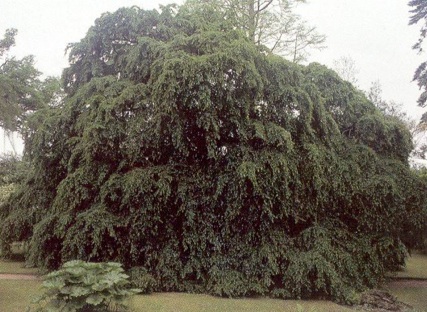| PSC 2620: Woody Trees and Shrub | Course Home | Week 5 |
Carpinus betulus - European Hornbeam
Plant Viewer
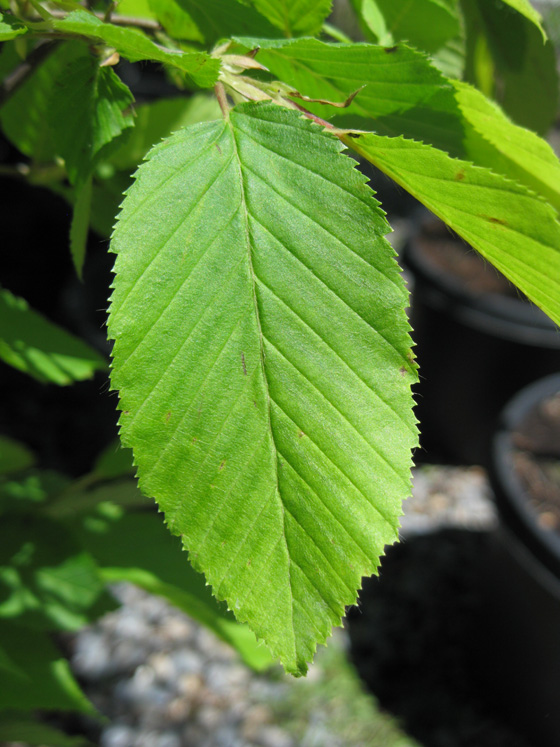 |
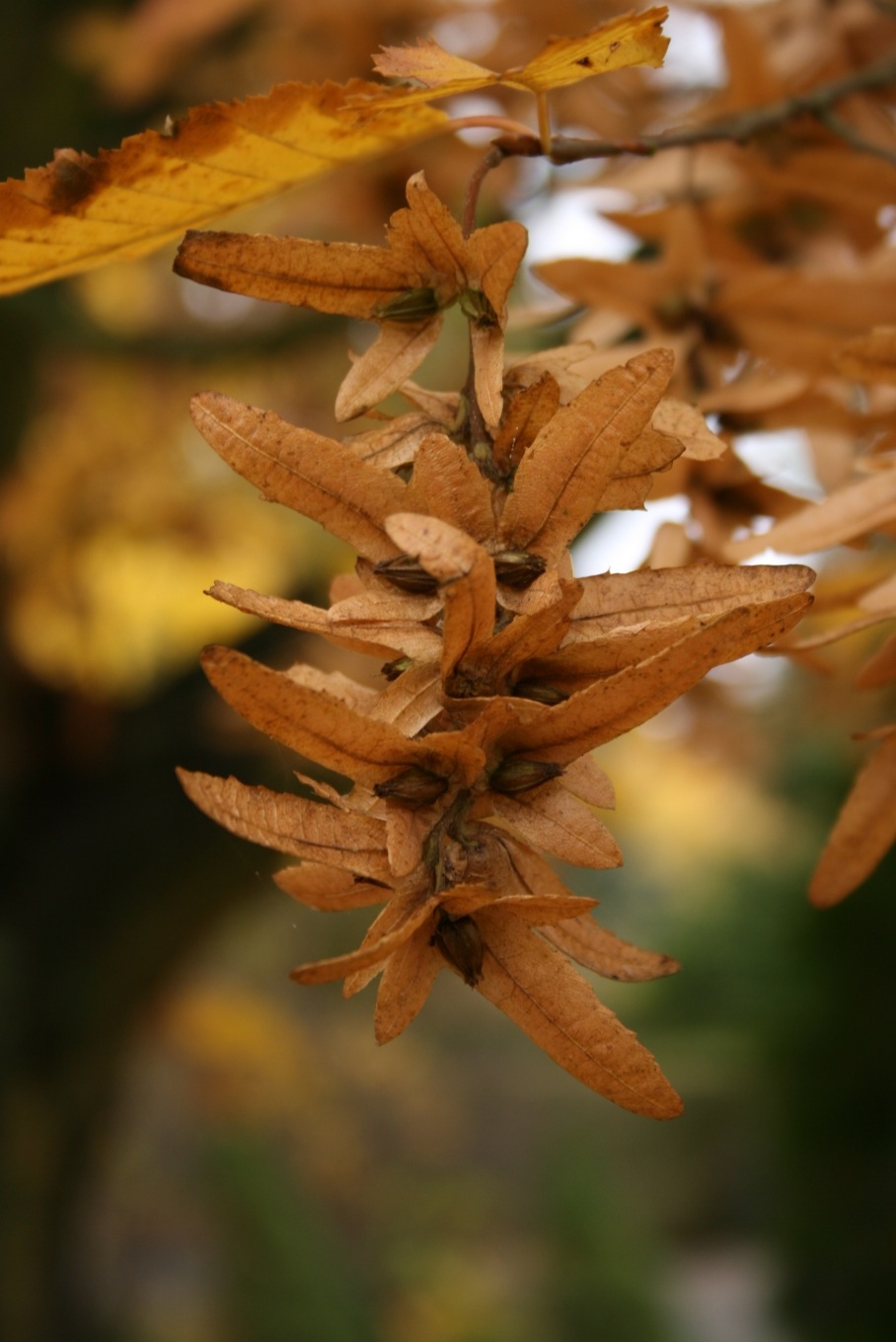 |
| The leaves are ovate, up to 5 inches long. | In the fall, pendulous chains of seeds form. They add an interesting texture to the tree at the end of fall. Image: Sten Porse |
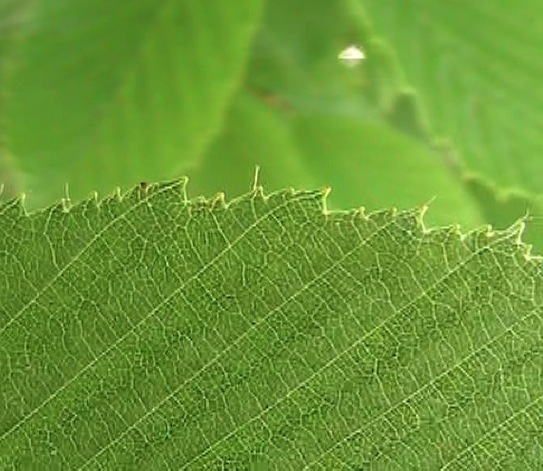 |
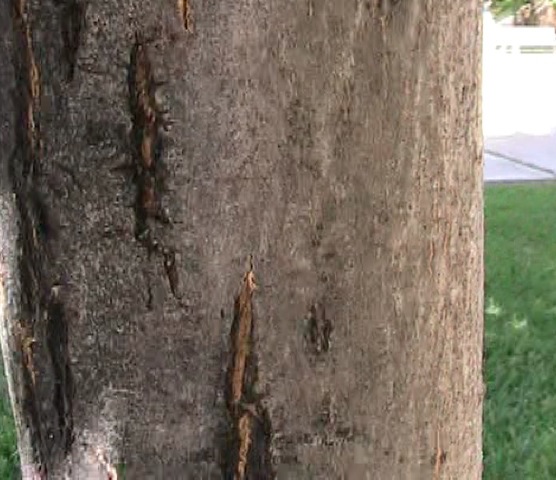 |
| The leaf has a doubly serrated margin with very even spacing of the serration. Notice that the veins are very equally spaced and parallel to each other. | The bark is an attractive smooth slate grey. |
Plant Description
European Hornbeam is a hardy and stately tree that is under utilized in the landscape. It is a large shade tree, reaching 40-60 feet high and 30-40 fee wide. The regular species has a good rounded form, but the most popular forms are columnar or more broadly upright. It is a tough and hardy tree without any significant disease issues.
The bark of the tree is a beautiful smooth slate gray. Very old bark develops an attractive fluted appearance. Unlike most other trees, the bark never develops the rough, corky bark of most other trees.
The dark green leaves are ovate in shape, 2 1/2 to 5 inches long with very visible veins. They are pointed at the tip, but rounded at the base. The margin of the leaf is doubly serrated with very consistent spacing of the serration. Catkins form in the spring but they are not particularly showy. In fall, the fruit appears as pendulous, chain-like clusters.
Landscape Use
The regular species makes an excellent shade or specimen tree. The most commonly occurring forms are columnar and are well suited as a vertical accent next to buildings or lining paths. These columnar forms are also well suited to hedges or wind blocks because of their low branching habit.
Points of interest
Carpinus betulus is a very long-lived tree, but has a slower growth rate.
Notable Cultivars
Fastigiata The most popular cultivar, it is broadly upright and forms a vase-shape at maturity. It will reach up to 40 feet high and 25 feet wide. It branching habit is very dense and the branches begin very low to the ground.
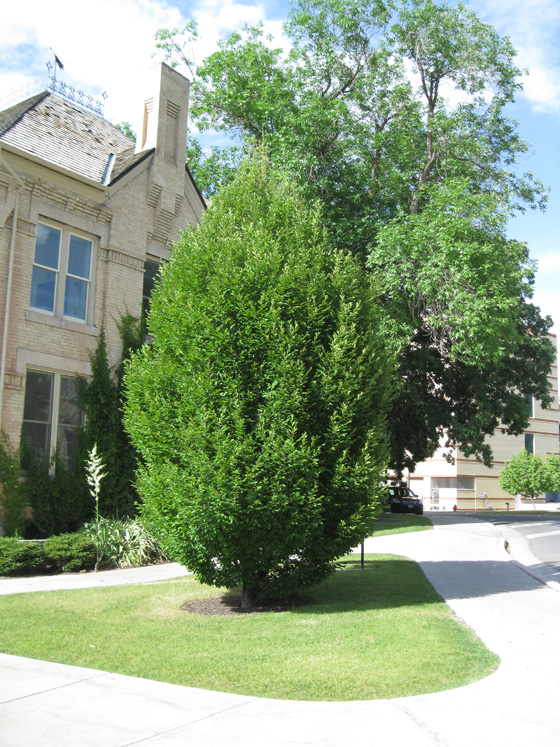
Pendula A medium sized tree with a strong weeping firm provides a graceful look to this tree.
